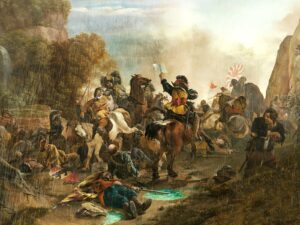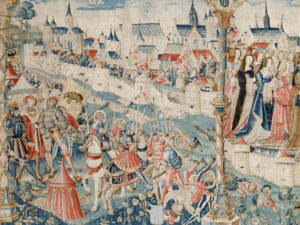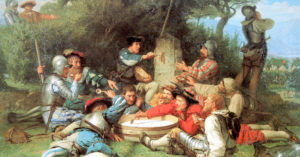
Wikimedia
The First Peace of Kappel
On 26 June 1529, the First Peace of Kappel was agreed. Catholics and Protestants laid down their arms at the last minute and ate soup together. But the peace didn’t last long. Two years later, the parties were facing off against each other yet again.
Since the Reformation, the Confederation had been divided into two denominations. On one side were the Catholics, and on the other, the Protestants. The differing views of these two faiths put the union under considerable strain on a number of occasions. Most of the time, the Swiss were able to resolve these conflicts by negotiation. This was the case in the First War of Kappel.
After Zurich, the cities of Bern, Basel and Schaffhausen had also become Protestant by 1528. Under the leadership of Zurich and Huldrych Zwingli, the Protestants sought to extend their power within the Confederation. This was to be done through the jointly ruled territories. Zwingli aimed to establish a policy of free choice of faith in those areas. The old Catholic cities, however, insisted on a majority vote by the jointly ruled territories, which in real terms meant the jointly ruled territories would have remained mostly Catholic. Tensions increased, and both sides prepared for war. The execution of Jakob Kaiser finally led to open conflict. The parish of Oberkirch in Kaltbrunn appointed Kaiser its new parish priest in 1529. The parish was in the jointly ruled territory of Uznach, which was administered by Glarus and Schwyz. They agreed that a Catholic priest would have been the right choice. But Jakob Kaiser was a Reformation priest. They had him arrested and burned as a heretic. He was accused of having campaigned for the Reformation in Linth, a Catholic area.

Graphic print, drawn by Johann Martin Usteri. Zwingli on horseback at the Battle of Kappel in 1531.
Swiss National Museum
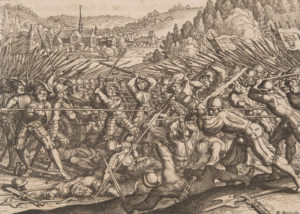
The 1531 Battle of Kappel in a copperplate engraving by Matthäus Merian the Elder (1593-1650). The work was created in the 17th century.
Swiss National Museum
Last-minute negotiations
In response, Zurich declared war on the five Catholic territories of Lucerne, Uri, Schwyz, Unterwalden and Zug, and with the troops it had already concentrated earlier it advanced to Kappel am Albis, on the border of Zug. The Zurich forces were supported by Bern. The five inner territories massed their soldiers on the other side. However, their army was only about half the size of that of their opponent. With the crisis set to escalate, the Glarus Landammann (chief magistrate) Hans Aebli managed, on 10 June 1529, to mediate between the opposing parties. Lengthy talks took place in the two war camps. Meanwhile, the soldiers from both sides fraternised peacefully. Symbolic of this is the incident referred to as the ‘Kappeler Milchsuppe’: representatives from both camps sat together and ate a soup of milk and bread.
Finally, on 26 June 1529 agreement was reached and peace was made. The treaty prevented bloodshed. The agreement was largely in favour of the Protestants, because the Reformation was now able to spread further in the jointly ruled territories. The parishes were given the right to determine by majority vote which denomination they wished to follow.
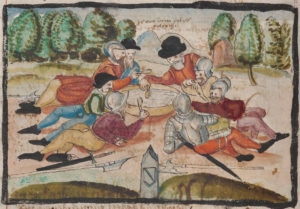
On the border between Zug and Zurich, fighters from both sides share a soup made out of milk and bread in June 1529. Painting by Heinrich Thomann, around 1605.
Zentralbibliothek-Zürich, e-manuscripta.ch
However, the peace treaty did not eliminate the differences within the Confederation. Just two years later, the two camps clashed yet again. In the Second War of Kappel of 1531, the Catholic cities triumphed and reversed some aspects of the peace treaty of 1529. In this conflict Huldrych Zwingli died, which was a further setback for the Reformation. The conflict between the denominations within the Confederation was not resolved until 1848, with the founding of the Federal state. Unlike in Europe, this took place largely without bloodshed. Time and again, the territories managed to find a solution and to strike a balance that was to some degree acceptable.

